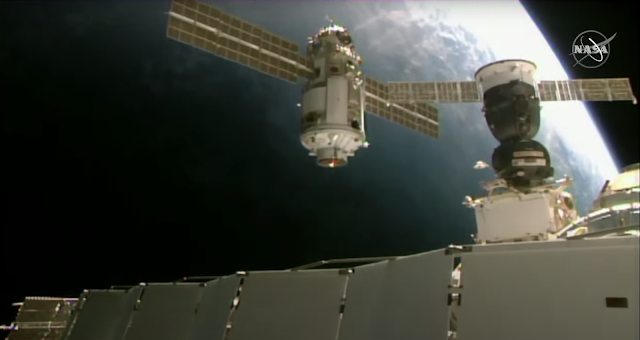CERN - European Organization for Nuclear Research logo.
July 31, 2021
Discovery of a new exotic hadron containing two charm quarks and an up and a down antiquark.
Image above: An artist’s impression of Tcc+, a tetraquark composed of two charm quarks and an up and a down antiquark (Image: CERN).
Today, the LHCb experiment at CERN is presenting a new discovery at the European Physical Society Conference on High Energy Physics (EPS-HEP). The new particle discovered by LHCb, labelled as Tcc+, is a tetraquark – an exotic hadron containing two quarks and two antiquarks. It is the longest-lived exotic matter particle ever discovered, and the first to contain two heavy quarks and two light antiquarks.
Quarks are the fundamental building blocks from which matter is constructed. They combine to form hadrons, namely baryons, such as the proton and the neutron, which consist of three quarks, and mesons, which are formed as quark-antiquark pairs. In recent years a number of so-called exotic hadrons – particles with four or five quarks, instead of the conventional two or three - have been found. Today’s discovery is of a particularly unique exotic hadron, an exotic exotic hadron if you like.
The new particle contains two charm quarks and an up and a down antiquark. Several tetraquarks have been discovered in recent years (including one with two charm quarks and two charm antiquarks), but this is the first one that contains two charm quarks, without charm antiquarks to balance them. Physicists call this “open charm” (in this case, “double open charm”). Particles containing a charm quark and a charm antiquark have “hidden charm” – the charm quantum number for the whole particle adds up to zero, just like a positive and a negative electrical charge would do. Here the charm quantum number adds up to two, so it has twice the charm!
The quark content of Tcc+ has other interesting features besides being open charm. It is the first particle to be found that belongs to a class of tetraquarks with two heavy quarks and two light antiquarks. Such particles decay by transforming into a pair of mesons, each formed by one of the heavy quarks and one of the light antiquarks. According to some theoretical predictions, the mass of tetraquarks of this type should be very close to the sum of masses of the two mesons. Such proximity in mass makes the decay “difficult”, resulting in a longer lifetime of the particle, and indeed Tcc+ is the longest-lived exotic hadron found to date.
The discovery paves the way for a search for heavier particles of the same type, with one or two charm quarks replaced by bottom quarks. The particle with two bottom quarks is especially interesting: according to calculations, its mass should be smaller than the sum of the masses of any pair of B mesons. This would make the decay not only unlikely, but actually forbidden: the particle would not be able to decay via the strong interaction and would have to do so via the weak interaction instead, which would make its lifetime several orders of magnitude longer than any previously observed exotic hadron.
The new Tcc+ tetraquark is an enticing target for further study. The particles that it decays into are all comparatively easy to detect and, in combination with the small amount of the available energy in the decay, this leads to an excellent precision on its mass and allows the study of the quantum numbers of this fascinating particle. This, in turn, can provide a stringent test for existing theoretical models and could even potentially allow previously unreachable effects to be probed.
Read more on the LHCb website and in the CERN Courier:
https://lhcb-public.web.cern.ch/Welcome.html#Tcc
https://cerncourier.com/a/new-tetraquark-a-whisker-away-from-stability/
Note:
CERN, the European Organization for Nuclear Research, is one of the world’s largest and most respected centres for scientific research. Its business is fundamental physics, finding out what the Universe is made of and how it works. At CERN, the world’s largest and most complex scientific instruments are used to study the basic constituents of matter — the fundamental particles. By studying what happens when these particles collide, physicists learn about the laws of Nature.
The instruments used at CERN are particle accelerators and detectors. Accelerators boost beams of particles to high energies before they are made to collide with each other or with stationary targets. Detectors observe and record the results of these collisions.
Founded in 1954, the CERN Laboratory sits astride the Franco–Swiss border near Geneva. It was one of Europe’s first joint ventures and now has 23 Member States.
Related links:
LHCb experiment at CERN: https://home.cern/science/experiments/lhcb
European Physical Society Conference on High Energy Physics (EPS-HEP): https://indico.desy.de/event/28202/
For more information about European Organization for Nuclear Research (CERN), Visit: https://home.cern/
Image (mentioned), Text, Credit: European Organization for Nuclear Research (CERN).
Best regards, Orbiter.ch















































